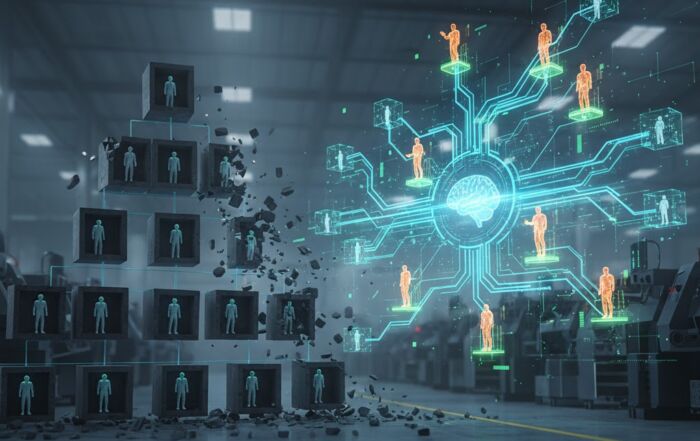Share
Author
George Anderson
Share
Whether it’s ECC or S/4HANA, your business lives in SAP ERP. If you’re going to do B2B ecommerce—and you should—then clearly, these two systems will need to share data through a reliable integration.
Broadly speaking, there are two types of SAP integration in a B2B ecommerce scenario.
- 3-system architecture (3rd party middleware solution sitting between SAP and B2B ecommerce)
- 2-system architecture (B2B ecommerce includes built-in SAP integration)
So how do you know which architecture is right for your organization?
Here are 3 key questions to ask. The answers will point you toward the right architecture.
1. Is it essential to have one system of record for all business data?
Most B2B ecommerce platforms come with their own database for customers, orders, products, and so on. Right away, this creates a potential issue if you’ve already defined all these entities in SAP ERP. Your B2B ecommerce database will always compete with SAP to be the system of record for your business data.
(Hint: A solution like Corevist Commerce Cloud avoids this problem by reading and writing SAP data directly, in real time, without storing anything in its own database.)
If your B2B ecommerce platform has its own database, and SAP is by definition another database of business information, you’ll have to place a third system (middleware) between them to replicate and synchronize data.
This comes with certain risks. Configuration changes can prevent SAP, middleware, and B2B ecommerce from synchronizing. When that happens, you’ll have to track down lost orders, not to mention triage the technology issue.
It’s much simpler to commit to using SAP, and SAP alone, as the system of record for business data. Setting an organizational policy of “no duplication” ensures that SAP is always correct in the data it shows. (Of course, to support this policy, you’ll need a B2B ecommerce platform that includes direct, real-time SAP integration—as Corevist Commerce Cloud does.)
2. Can you justify the complexity of a 3-system architecture?
While the ideal state is a 2-system architecture (no middleware), some organizations may have a strategic driver for implementing a 3-system architecture. Perhaps the C-suite has issued a mandate to use a specific platform—one that has its own database and requires a middleware integration.
Perhaps the organization wants to use highly sophisticated technologies in front-end user experience—technologies that only certain platforms offer.
Whatever the reason, any organization must carefully weigh the pros and cons of a 3-system architecture.
In some use cases, the complexity may be justified.
In others, it may be more trouble than it’s worth.
3. Do you have the IT resources to build and maintain a 3-system architecture?
There’s no way around it: A 3-system architecture requires more resources to maintain than a 2-system architecture. SAP ERP, middleware, and B2B ecommerce each require a full-time team to upgrade and support them.
Perhaps you have these IT resources in-house. Maybe you’re prepared to outsource them.
What if neither scenario is the case?
If you don’t have available IT resources, and you can’t outsource significant resources either, then a 3-system architecture is a risky proposition. By nature, this architecture invites technical debt. You’ll need experts who can triage issues, manage upgrades, and keep all 3 systems working smoothly for years.
If you don’t have dedicated resources who can handle this, you’ll want to look at a 2-system architecture. When your B2B ecommerce platform includes prebuilt, configurable SAP integration, you reduce the cost and complexity of B2B ecommerce—all while maintaining SAP as the system of record. That’s the thinking behind Corevist Commerce Cloud.










